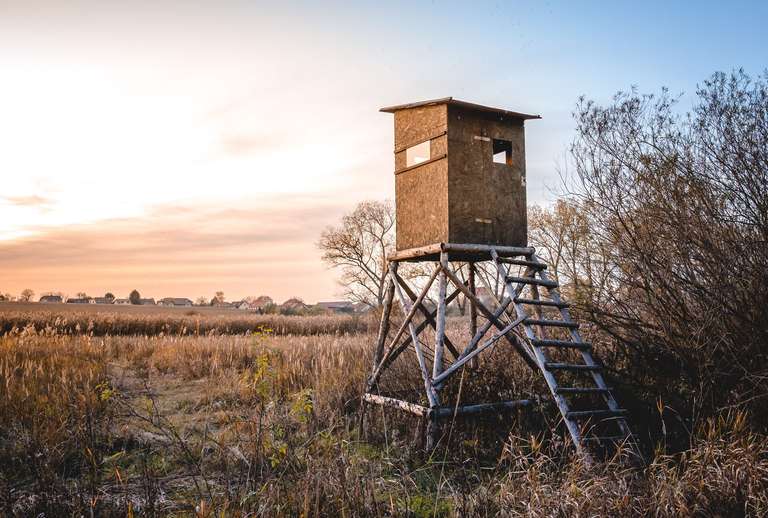What's the Best Way to Call a Turkey? [A Hunter's Guide]
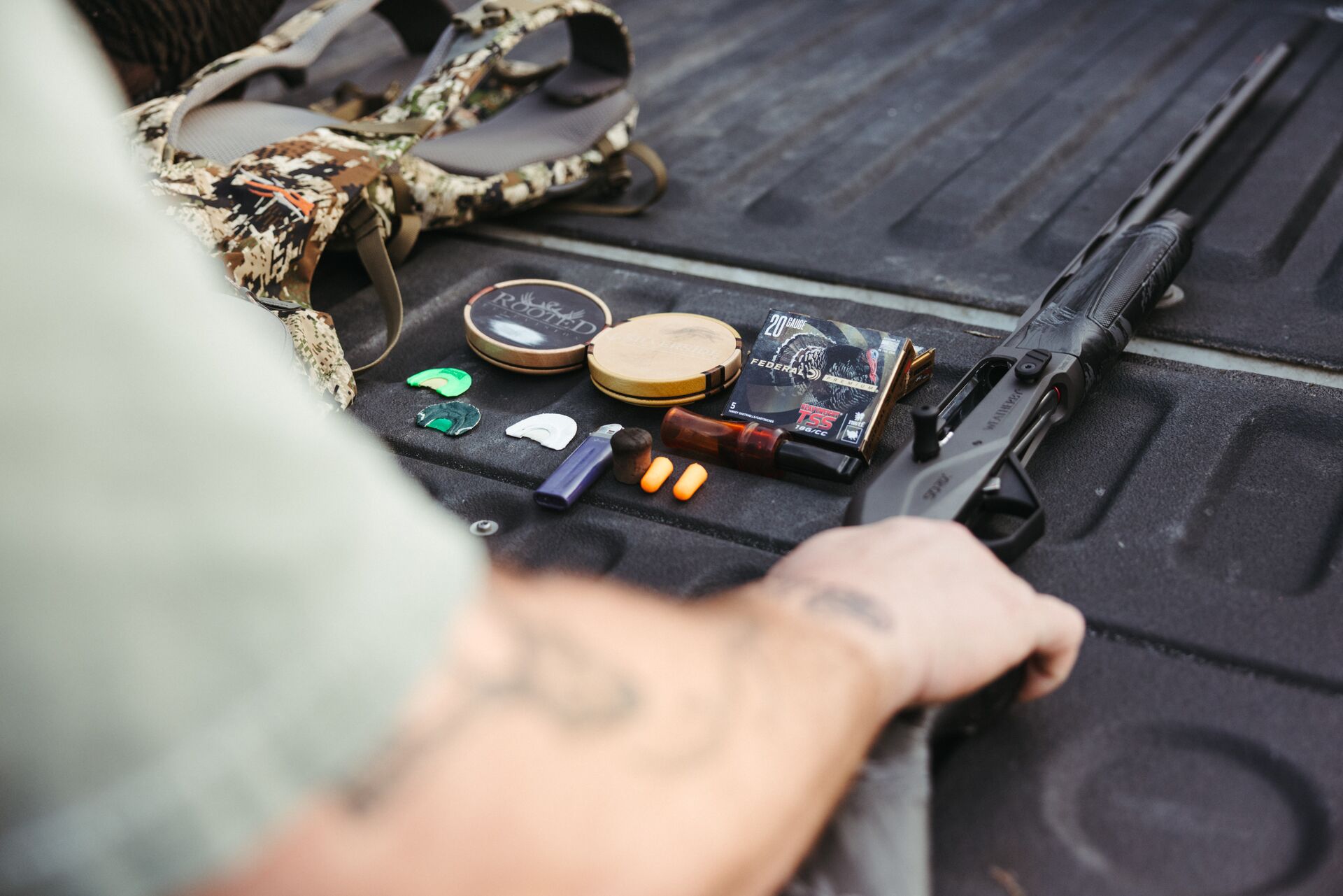
The ability to mimic and "talk" to a turkey is a fundamental and critical skill for any hunter hoping to harvest a spring gobbler. Turkeys communicate with each other through a wide range of vocalizations, which creates a unique opportunity for hunters to engage in an actual conversation with these highly intelligent birds.
If you can learn to be an effective turkey caller, you can yelp like a hen to draw in a lovesick tom. Or replicate the contented purr of a feeding turkey to create the illusion that all is right in the world.
This guide will explore the most common types of calls and the fundamental vocalizations you should learn to find the best way to call a turkey and be an effective and successful hunter.
Types of Turkey Calls
What are the different calls hunters should know? Here's an overview of various turkey calls and why they're important.

Box Calls
A box call is comprised of a wooden box with a hinged lid. The underside of the lid is covered with chalk powder to increase friction. When dragging the lid across the top of the box, it makes a scratchy noise that sounds like a hen.
The box call is the easiest to use for creating loud, resonant, and realistic yelps to help you locate turkeys. While this turkey call is simple, it does take practice with different pressures to produce realistic turkey sounds accurately, such as the subtle purr.
The only downside of the box call is that you need to use both hands. You'll need to put the call down when the gobbler comes close so he won't spot your movement.
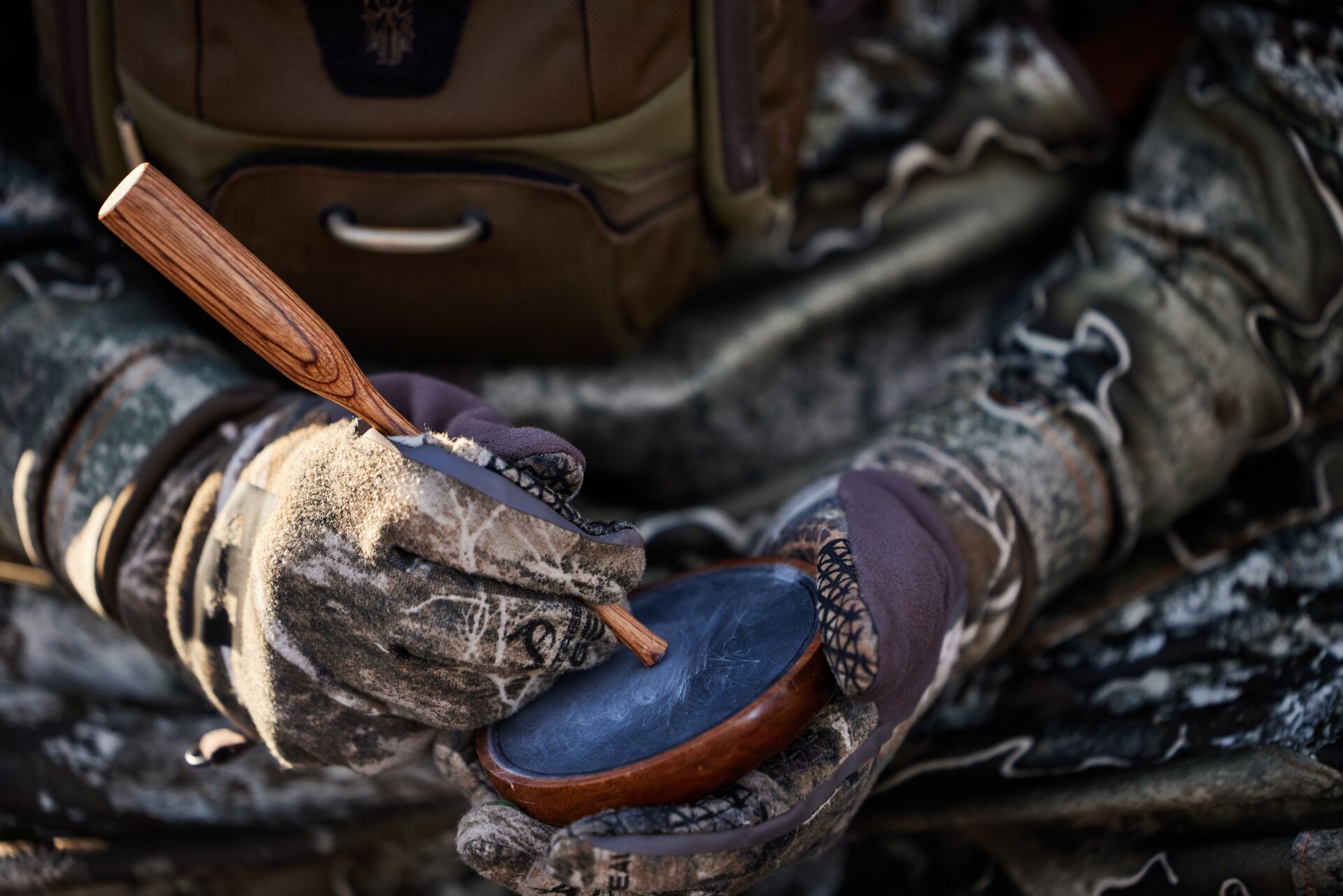
Pot Calls
A pot, or slate, call is a friction call similar in shape and size to a hockey puck. The call's surface is made from slate, glass, or aluminum, producing a "squeak" sound when a stick (striker) is dragged across it.
With practice, you can make that squeak sound like a soft cluck, yelp, or purr, which makes the slate call perfect for closer distances.
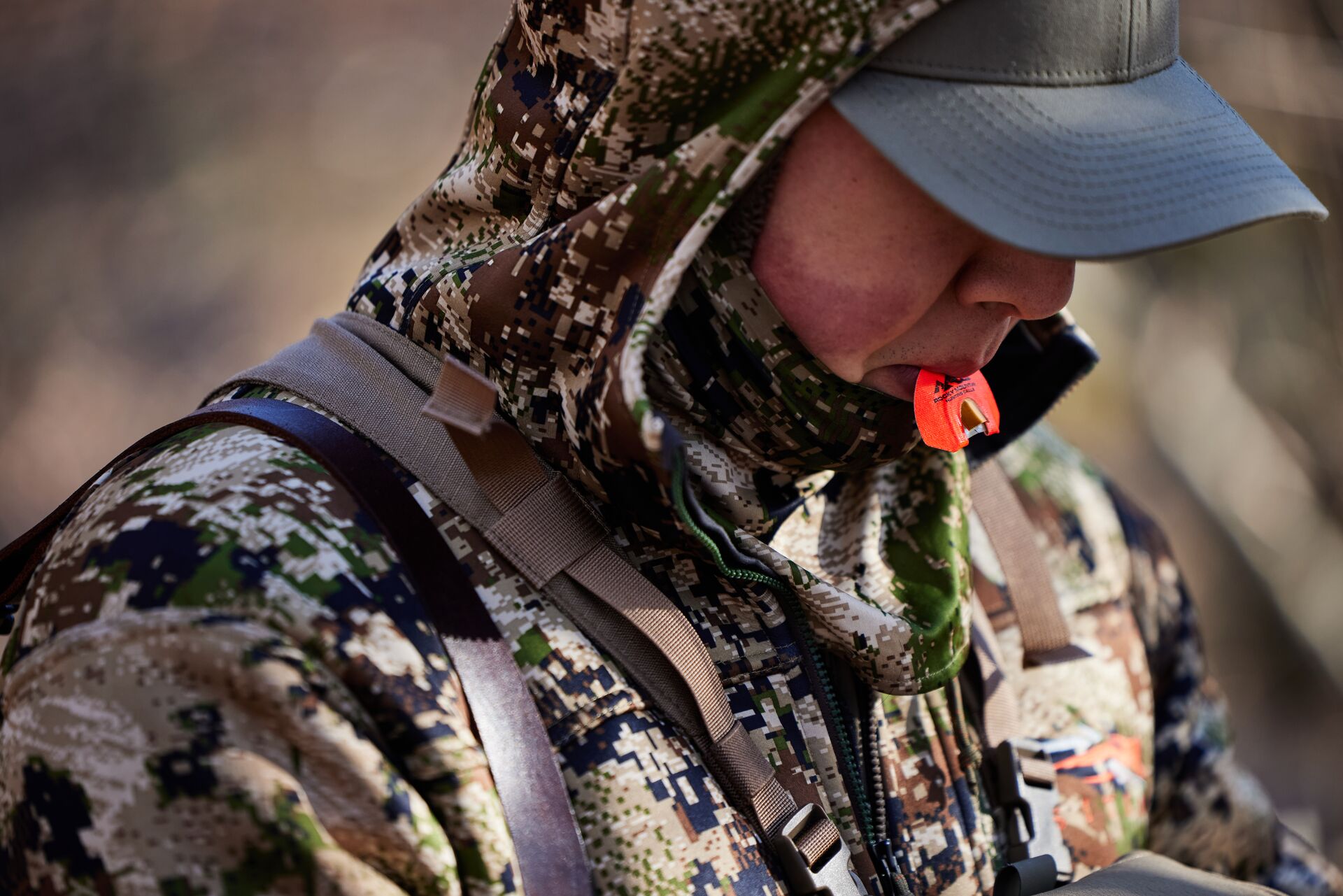
Diaphragm (Mouth) Calls
A diaphragm call is a small latex reed stretched across a metal or plastic frame that sits on your tongue. When you press the call against the roof of your mouth and exhale (more like a cough than a blow), the reed vibrates and makes noise.
With practice, you can create various vocalizations like loud yelps, soft purrs, aggressive cutting, and even gobbles.
However, diaphragm calls are also the most challenging to learn. You'll need to find the sweet spot in your mouth for the call and know where to position your tongue to get the best airflow. You'll also need to figure out how much air pressure you need to use so you don't sound like a dog's squeaky toy.
The diaphragm call's most significant advantage is that it is hands-free. This allows you to work a turkey close while keeping your hands on your bow or shotgun with a full choke.
Push-Pin Calls
Also called a push-button call, the push-pin call is similar to a box call. Instead of swiping a chalked lid across the box, you depress a wood dowel, which pushes a chalked wood block across the call's interior walls.
The push-pin call is perhaps the simplest to use when it comes to turkey calling for beginners and youth hunters.
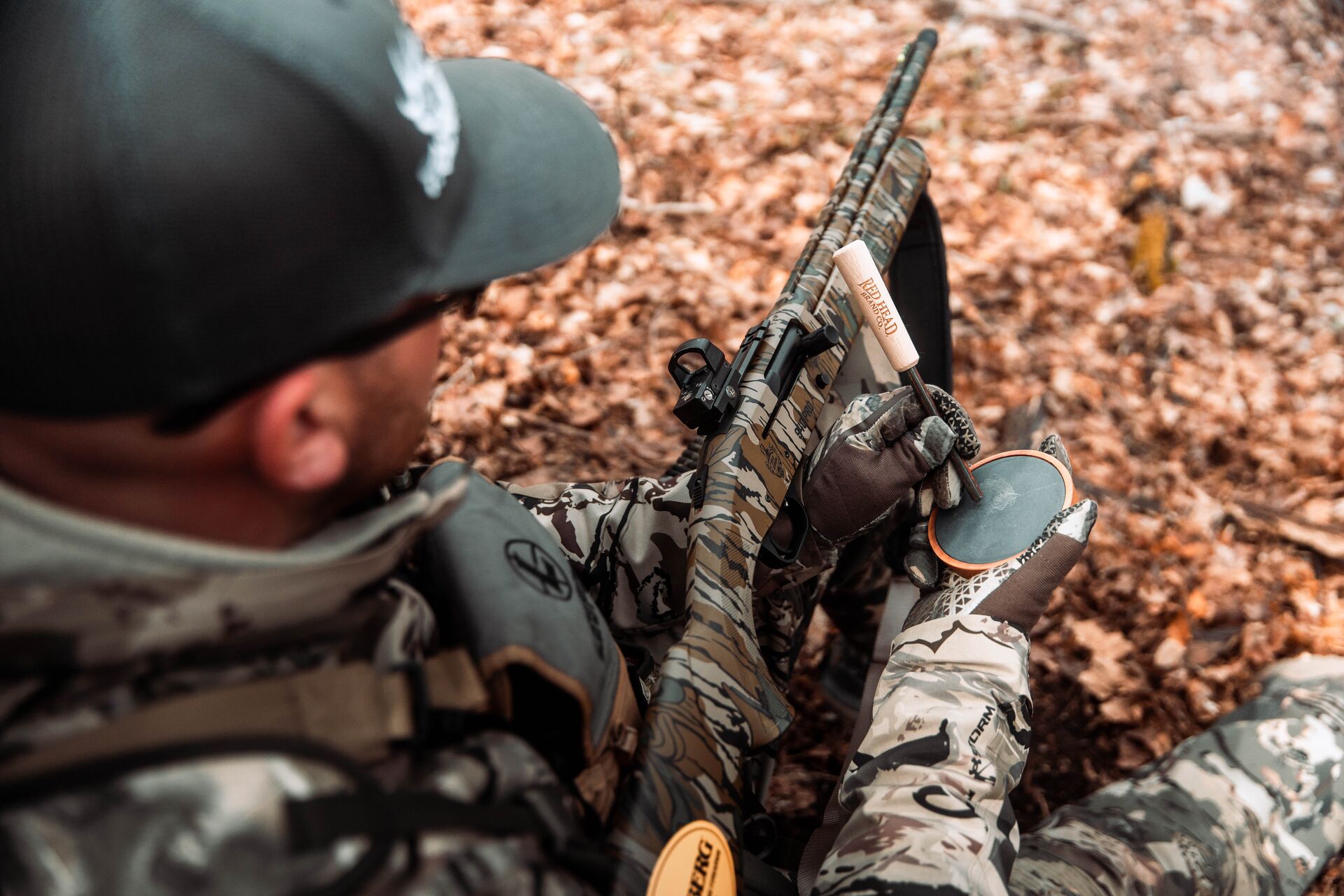
The Best Way to Call a Turkey
Once you've picked a turkey call to start practicing with, begin with these fundamental turkey sounds.
Yelps
The yelp is the most common sound turkeys make. I like to think of it as a general-purpose "hey" used to get another bird's attention.
To sound like a hen wanting to attract a gobbler, start with a loud, sharp yelp followed by 5-7 softer yelps.
Assembly yelps are softer but more urgent. Hens use this call to gather their flock. It is more common to use this call in the fall when the birds aren't in their mating season, and you need to use different hunting tactics.
Clucks
A cluck is a sharp, short note that signifies contentment. You can occasionally mix clucks with your yelps to make your calling sequence more natural.
Softer clucks can reassure an approaching tom that everything is safe and the hen is waiting for him.
Purrs
A turkey purr is similar to a cat's purr in that the vocalization indicates contentment. It is a soft, rolling sound often made by turkeys as they slowly walk and feed. Combining a soft cluck with a purr can create a relaxed atmosphere to lure a tom within shooting range.
Cutting
Cutting is a series of fast, loud clucks to express urgency and excitement. Hens will make the cutting sounds to indicate they are ready to breed.
Aggressive cutting can get a tom's attention if he is already with a group of hens and needs to be enticed to leave them. Since the cutting sound is the equivalent of turkeys yelling, it should be used sparingly to avoid spooking wary gobblers.

Calling Tips for Beginner Turkey Hunters
Before you fall into the temptation of buying every type of call, start with one and learn to master it to make all the vocalizations listed above.
Calling can be deceptively tricky, so regular practice is critical. I like to practice by mimicking recordings of wild turkeys from the National Wild Turkey Federation.
The best way to put your practice to the test and figure out how to call turkeys is to head to the field. Since turkeys are most vocal early in the morning, head to the woods before sunrise and just sit and listen.
Respond with a soft series of yelps or cutting if you hear a tom gobbling. If he responds, continue the conversation with more yelps while adjusting the volume based on the tom's excitement and your surroundings.
Remember, with turkey calling, less is often more. You are teasing the tom to come to you, not nagging it.
Advanced Tips for Seasoned Turkey Hunters
Wild turkeys rarely make textbook-perfect calls, so small mistakes and variations in your calls can sound more authentic. Some flocks may use a sequence of 5-7 clucks, while others will use 10-12. As you spend more time in the field listening to turkeys, take note of those imperfections, pauses, note sequences, and volume.
Try using multiple types of calls to simulate a flock. For example, use a box call to make cutting sounds followed by a diaphragm for purrs. Since each call has a unique resonance, pitch, and volume, you can use those differences to your advantage to sound like multiple birds.
Use challenge gobbles sparingly. Turkeys, especially those toms that have survived the early season, are savvy and can quickly pick up when a vocalization doesn't fit the setting.
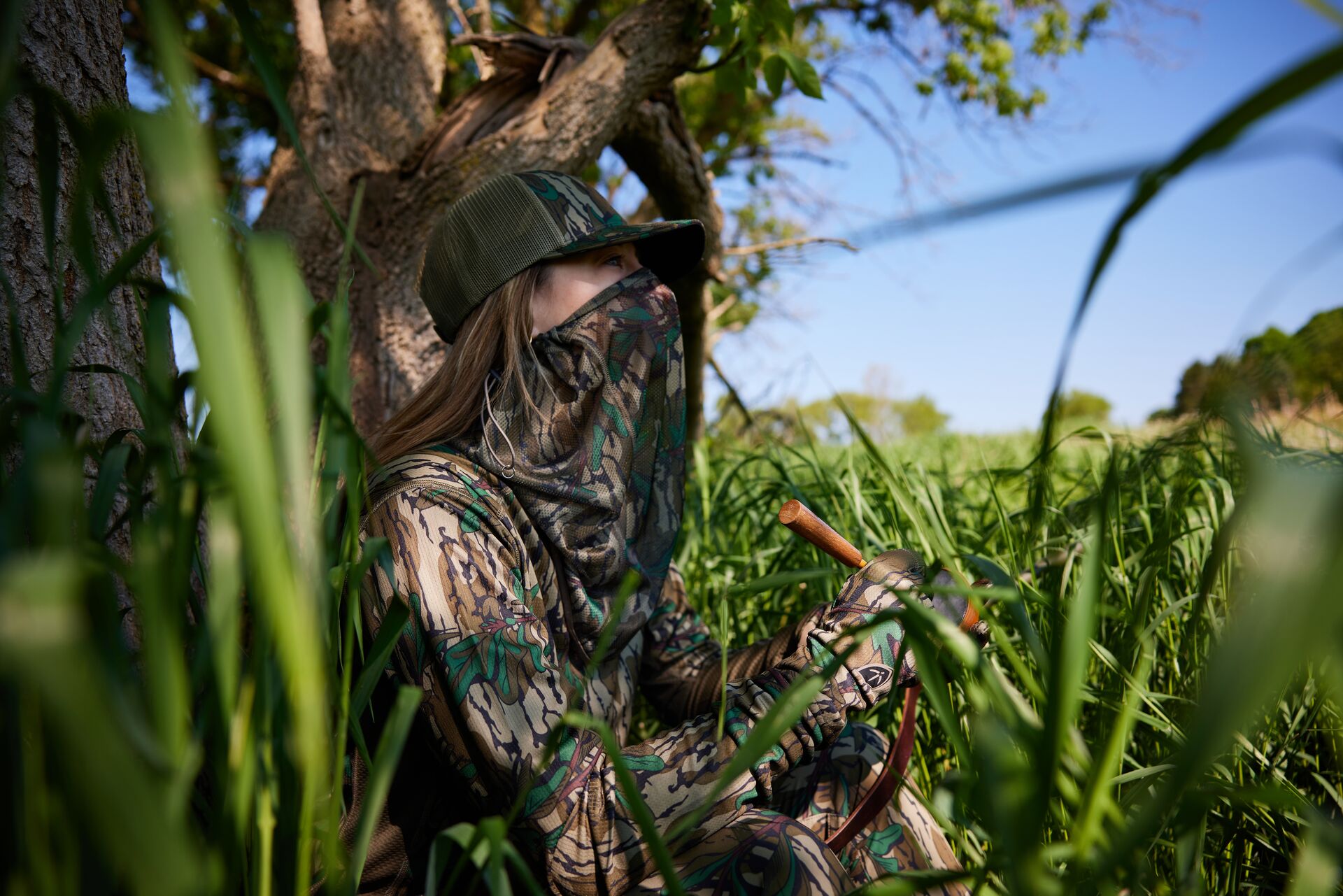
Troubleshooting Your Turkey Calling
If turkeys don't respond to your calls, don't increase your calling intensity or frequency. Your best bet is to pack up and change locations instead. The birds are likely on to you.
If you run into a tom that initially shows interest but refuses to come closer, it’s time to play coy. Toms usually expect the hen to go to them, not vice versa. Be patient and use softer calls to pique the tom’s curiosity to lure him into range.
The same approach can be used with more aggressive cutting and challenge calls for toms already hanging out with hens. They will be reluctant to leave real hens for a potential hen, so you may need to grab their attention and tease them to come toward you.
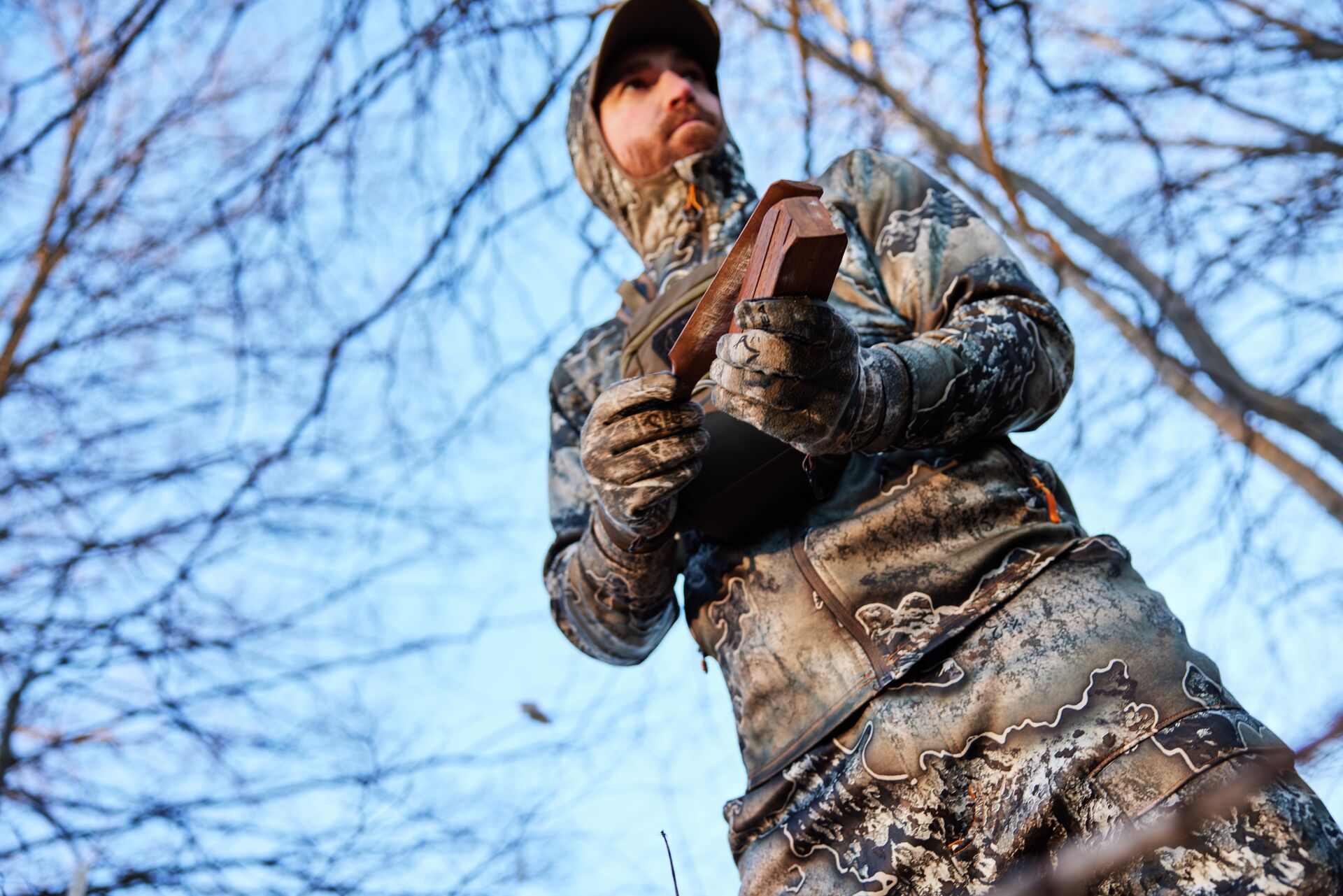
How to Call Turkeys: Practice and Patience
Calling turkeys is both an art and a science. Calls allow you to communicate with the bird and entice it to come toward you. To that end, turkey calling is more about listening to what the birds are saying and then using my calls to engage them in the next steps of an ongoing conversation.
Whether you’re using a box call, slate call, diaphragm, or push-button call, knowing a turkey’s “love language” and how to execute proper calling techniques will dramatically increase your ability to bring a tom within range. The key to success is to observe, adapt, and be incredibly patient. Turkeys are savvy, and no two birds will respond the same.
In addition to practicing the best way to call a turkey, make sure you have your hunter education card before your first turkey hunt of the season! Each state-specific course through ilearntohunt helps you develop basic hunting skills, learn firearms and archery fundamentals, better understand effective shot placement, and create safe and ethical hunting practices.
Stay safe when hunting turkeys this season!
Take the ilearntohunt course for your state, then get out and call in a tom.



